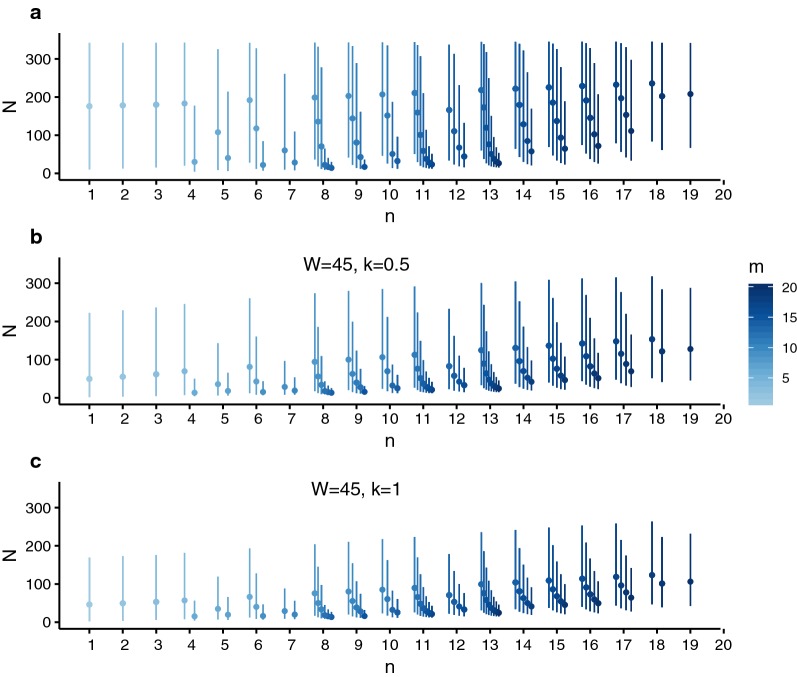Fig. 6.
Estimated number of fecund female worms using genotypic data on Schistosoma mansoni miracidia collected from schoolchildren in Tanzania. The technique is illustrated using data from a recent study [28], where sibship reconstruction was used on multiplexed microsatellite genotypic data of miracidia collected from 151 schoolchildren in Tanzania, to identify the number of unique parental genotypes of S. mansoni in each individual. The posterior distribution of the number of fecund female worms N was estimated for each of 150 schoolchildren, given the identified number of unique parental genotypes n, the number of sampled miracidial offspring m, and using either a weakly informative (uniform) prior distribution or an informative negative binomial prior, the latter parameterised by the mean number of female worms per host W and overdispersion parameter k. The weakly informative prior in panel a is described by a uniform distribution ranging from 1 to 350 (female worms). The informative negative binomial prior in panel b is defined by W = 45 and k = 0.5, and in (c) by W = 45 and k = 1. The negative binomial prior parameterisations were informed by the autopsy data from Cheever [40]. The number of sampled miracidial offspring m, increases from 1 to 20 per host, from light to dark blue

